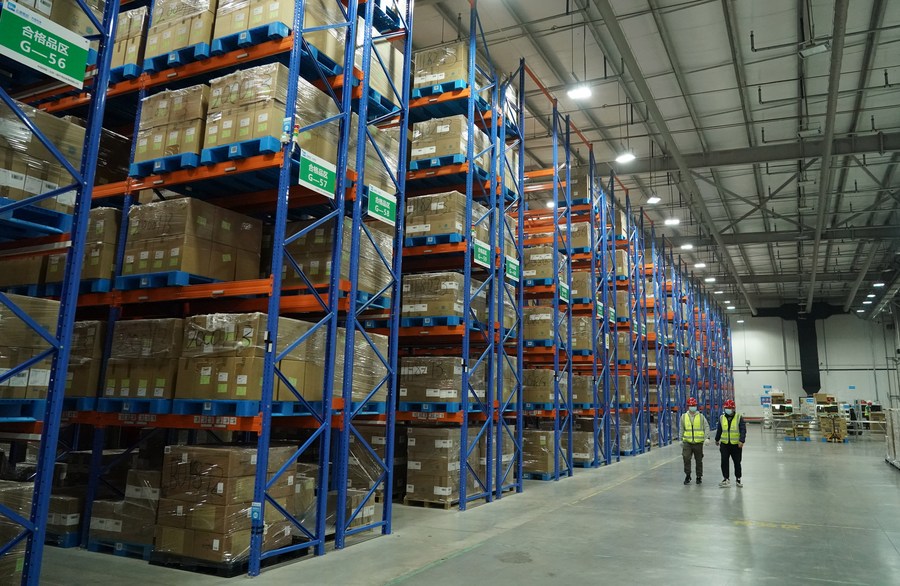
Two workers walk inside a warehouse of imported medicine for cross-border e-commerce in Tianzhu comprehensive bonded zone in Shunyi District, Beijing, capital of China, on March 12, 2021. (Xinhua/Ren Chao)
BEIJING, April 25 (Xinhua) -- China's cross-border e-commerce has gained momentum amid the COVID-19 epidemic, providing broader market opportunities and driving domestic consumption growth.
The market size of cross-border e-commerce in China topped 14.6 trillion yuan (about 2.25 trillion U.S. dollars) in 2021, putting the compound annual growth rate of the market at approximately 18 percent in the past five years, according to a report published by the global consultancy firm EY.
The penetration of cross-border e-commerce has also risen, with the rate reaching 40 percent last year, data from the report showed.
"China's cross-border e-commerce market has remained on a fast track since 2015," said the report, giving credit to the country's supportive policies.
China began setting up cross-border e-commerce pilot zones as early as 2015 in Hangzhou, Zhejiang Province, to trial the new business form and digitalize its trade channels.
In February, the country revealed its sixth batch of 27 cross-border e-commerce pilot zones, bringing the total to 132.
China's cross-border e-commerce has achieved coordinated development across different regions, said the Ministry of Commerce.
The pilot zones have covered almost all provincial-level regions in China from coastal manufacturing hub of Guangdong to inland port city of Alashankou in northwest China's Xinjiang Uygur Autonomous Region.
China's cross-border e-commerce imports and exports climbed 15 percent year on year to 1.98 trillion yuan in 2021. In the first quarter this year, cross-border e-commerce trade scale hit 434.5 billion yuan, said the commerce ministry.
Cross-border e-commerce has also offset the pandemic, as more consumers switched to online shopping to avoid face-to-face contact, according to the EY report.
Chinese consumer activities weakened in March as resurgences of COVID-19 impeded catering and travelling activities. However, online sales performed well, with the figure rising 6.6 percent year on year to reach about 3.01 trillion yuan in the January-March period.
A 2020-2021 research report on China's cross-border e-commerce imports by iiMedia Research showed that 67.1 percent of interviewees said they had purchased products on cross-border e-commerce platforms.
With China's further opening-up, gradual improvement in the cross-border e-commerce system and people's increasing income, residents' demand for imported goods will continue to rise and bring about further increases to consumption, said iiMedia Research. ■












